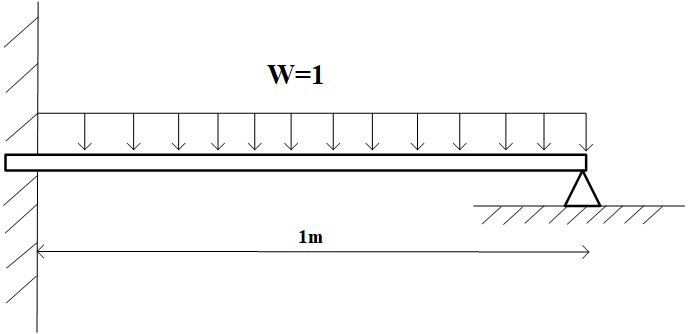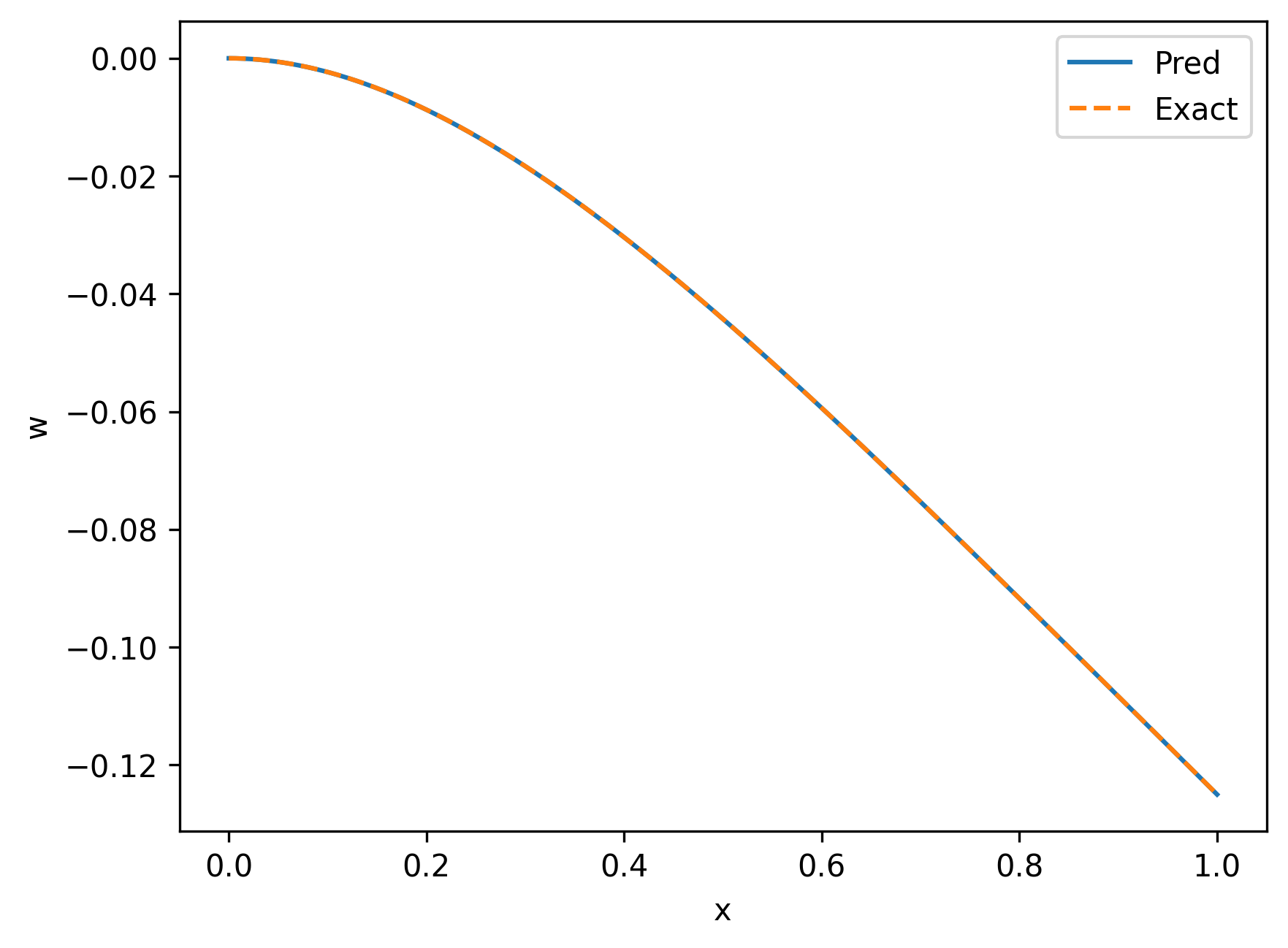2.4 KiB
Euler–Bernoulli beam
We consider the Euler–Bernoulli beam equation,
\begin{align}
\frac{\partial^{2}}{\partial x^{2}}\left(\frac{\partial^{2} u}{\partial x^{2}}\right)=-1 \\
u|_{x=0}=0, u^{\prime}|_{x=0}=0, \\
u^{\prime \prime}|_{x=1}=0, u^{\prime \prime \prime}|_{x=1}=0,
\end{align}
which models the following beam with external forces.
Expression Node
The Euler-Bernoulli beam equation is not implemented inside IDRLnet.
Users may add the equation to idrlnet.pde_op.equations.
However, one may also define the differential equation via symbol expressions directly.
First, we define a function symbol in the symbol definition part.
x = sp.symbols('x')
y = sp.Function('y')(x)
In the PDE definition part, we add these PDE nodes:
pde1 = sc.ExpressionNode(name='dddd_y', expression=y.diff(x).diff(x).diff(x).diff(x) + 1)
pde2 = sc.ExpressionNode(name='d_y', expression=y.diff(x))
pde3 = sc.ExpressionNode(name='dd_y', expression=y.diff(x).diff(x))
pde4 = sc.ExpressionNode(name='ddd_y', expression=y.diff(x).diff(x).diff(x))
These are instances of idrl.pde.PdeNode, which are also computational nodes.
For example, pde1 is an instance of Node with
inputs=tuple();derivatives=(y__x__x__x__x, );outputs=('dddd_y',).
The four PDE nodes match the following operators, respectively:
dy^4/d^4x+1;dy/dx;dy^2/d^2x;dy^3/d^3x.
Seperate Inference Domain
In this example, we define a domain specified for inference.
@sc.datanode(name='infer')
class Infer(sc.SampleDomain):
def sampling(self, *args, **kwargs):
return {'x': np.linspace(0, 1, 1000).reshape(-1, 1)}, {}
Its instance is not be passed to the solver initializer,
which may improve the performance since Infer().sampling
After the solving procedure ends, we change the sample_domains of the solver,
solver.sample_domains = (Infer(),)
which triggers the regeneration of the computational graph. Then solver.infer_step() is called.
points = solver.infer_step({'infer': ['x', 'y']})
xs = points['infer']['x'].detach().cpu().numpy().ravel()
y_pred = points['infer']['y'].detach().cpu().numpy().ravel()
The result is shown as follows.
See examples/euler_beam.

